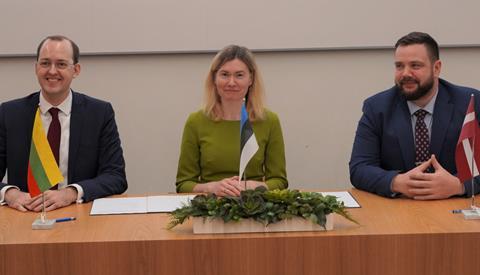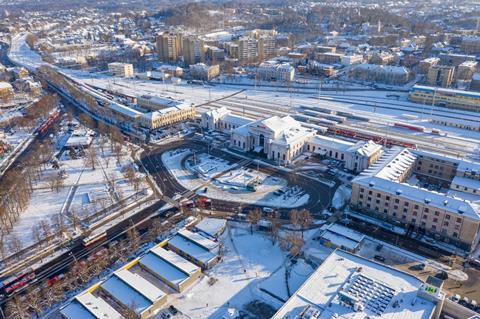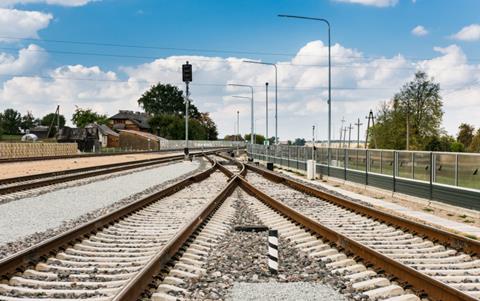
EUROPE: Lithuania, Latvia and Estonia are to explore options to launch a passenger service between their capitals using existing 1 520 mm gauge railways, ahead of the completion of the future Rail Baltica 1 435 mm gauge line.
The lack of through services between the Baltic States has long been a noticeable gap in the European passenger rail network.
Meeting in Tallinn in January 23, the transport ministers from the three countries discussed co-operation to improve passenger and freight links, to speed up the implementation of the Rail Baltica project and to develop a north–south transport corridor to Ukraine avoiding Russia and Belarus. They also agreed to establish a joint task force to increase the independence of the Baltic rail sector, in the light of Russia’s war against Ukraine.
Vilnius – Riga – Tallinn

Minister of Transport & Communications Marius Skuodis said Lithuania would be able to launch its part of a Vilnius – Riga – Tallinn passenger service in the near future, subject to a joint agreement with the other countries.
‘Such a train would be a natural complement to the train service from Vilnius to Warszawa and Kraków, which launched in December 2022’, he said. It would provide ’not only an increase in travel options, but also a contribution to the development of environmentally friendly rail transport’.
Latvia’s Minister for Transport Jānis Vitenbergs said ’it is necessary to agree on the conditions under which this could happen and to use the already existing routes by adjusting them accordingly’.
Estonia’s Minister of Economic Affairs & Communications Riina Sikkut said ’in the grand scheme of things, we have nothing against it, but it does require thorough preliminary work and analysis’.
She said ‘modern transport infrastructure is one of the key factors for strengthening economic ties, which is why the completion of the Rail Baltica project is our top geopolitical and economic priority. However, while Rail Baltica is under construction, we could consider transporting passengers on the existing route.’
Gauge conversion

Discussing the European Commission’s proposal to require the use of 1 435 mm gauge on TEN-T routes, the ministers said conversion of their existing networks would require a joint plan for a co-ordinated transition.
Estonia’s Minister of Economic Affairs & Communications Riina Sikkut said she did not rule out a future change, but it would require very large investments in infrastructure, trains and control systems, which preliminary estimates say could cost €8·7bn.

















